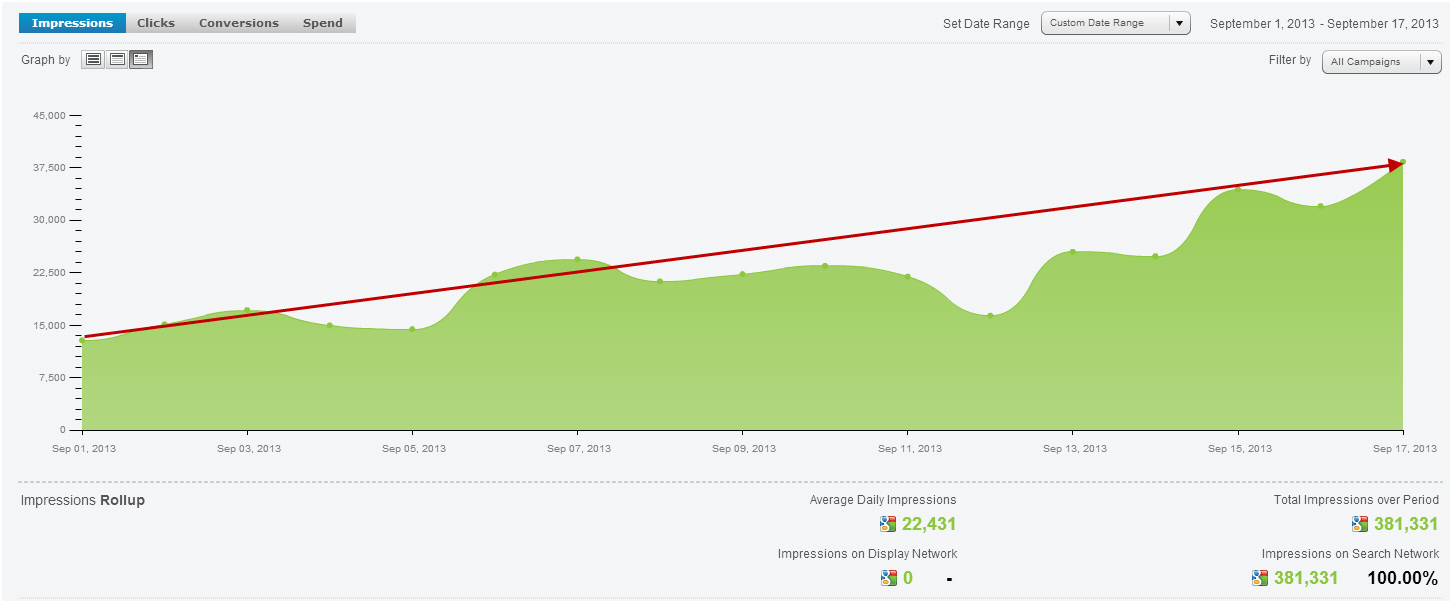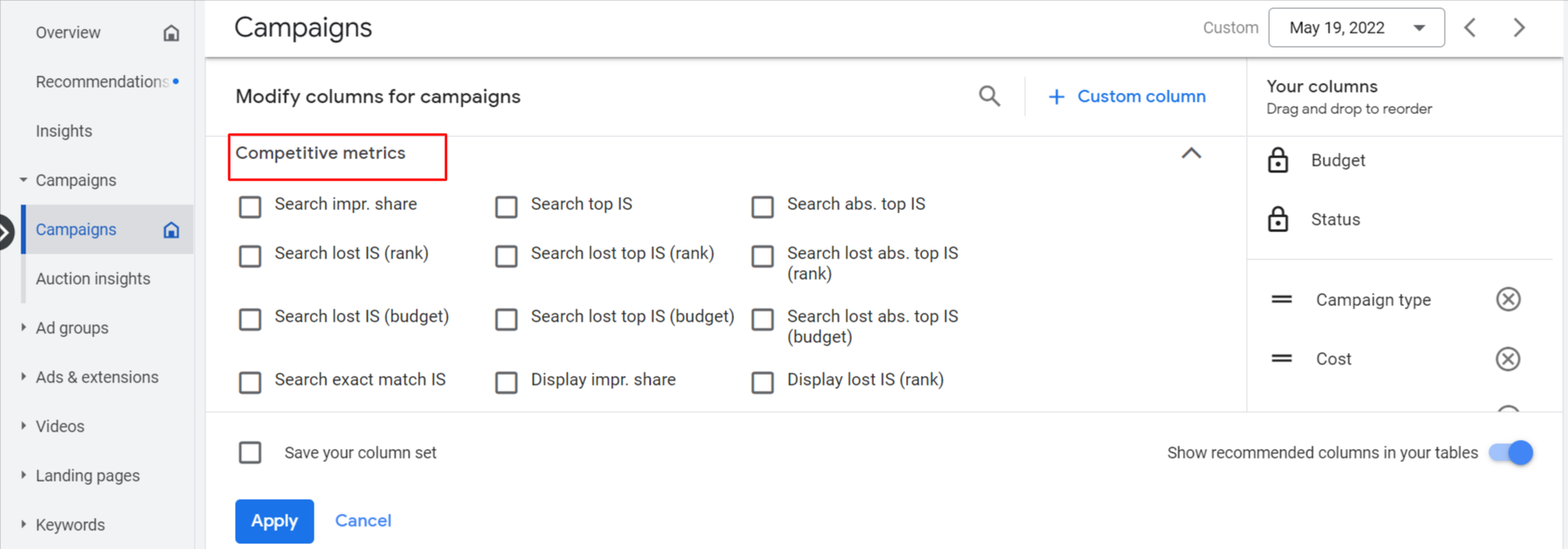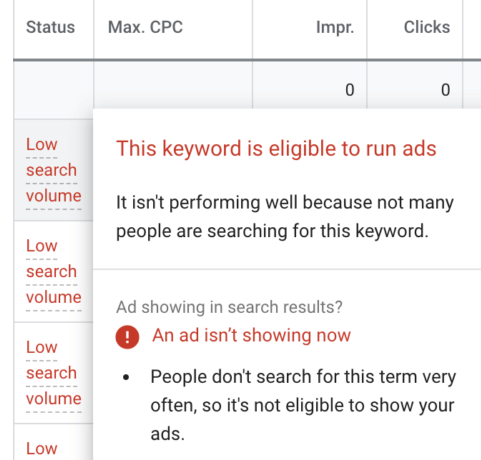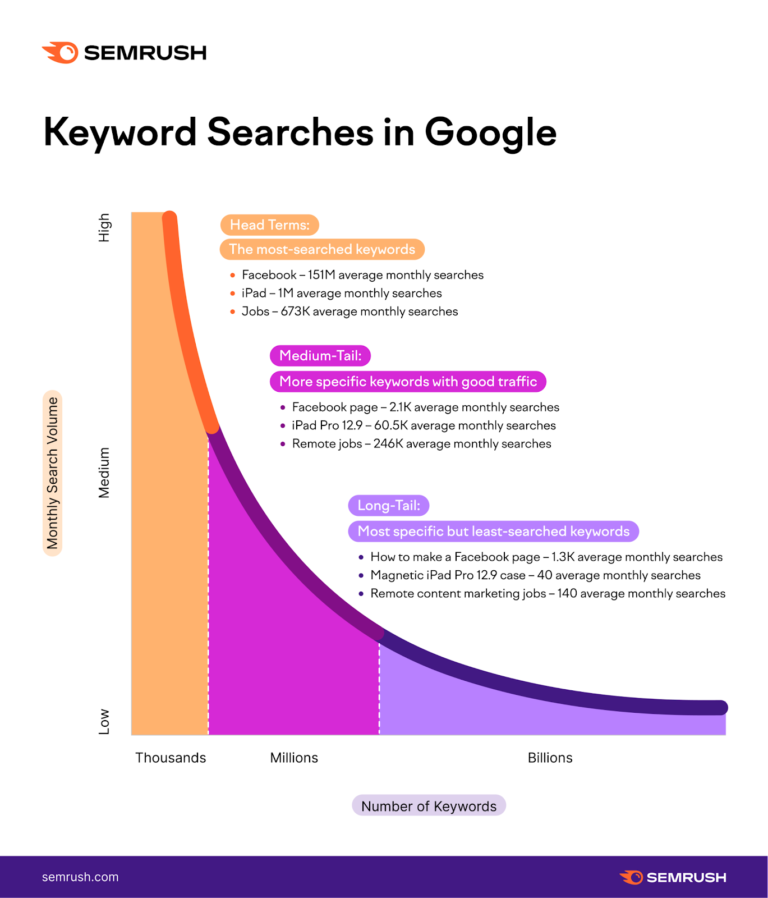To fix low search impressions and clicks in your Google Ads campaign, optimize your keywords, improve ad relevance and quality score, and refine targeting settings. Are you struggling with low search impressions and clicks in your Google Ads campaign?
It can be frustrating when your ads don’t attract the desired attention from potential customers. However, there are several steps you can take to improve the performance of your campaign. By carefully optimizing your keywords, increasing ad relevance and quality score, and refining your targeting settings, you can increase your search impressions and attract more clicks.
We will explore these strategies in detail and provide you with actionable tips to fix the low search impressions and clicks in your Google Ads campaign.

Credit: www.wordstream.com
Understanding Low Search Impressions And Clicks
Understanding low search impressions and clicks is crucial to the success of your Google Ads campaign. Impressions and clicks are key metrics that indicate how well your advertisements are performing. Low search impressions and clicks can be indicative of various issues that need to be addressed in order to improve the performance of your campaign.
The Importance Of Search Impressions And Clicks
Search impressions refer to the number of times your ad appears on the search engine results page (SERP) in response to a user’s search query. Clicks, on the other hand, signify the number of times users have clicked on your ad. Both search impressions and clicks play a significant role in determining the visibility and success of your campaign.
Impressions and clicks are crucial because:
- They indicate the relevance and visibility of your ad to the target audience. The more impressions and clicks your ad receives, the more likely it is to reach potential customers.
- They can directly impact your campaign’s click-through rate (CTR) and quality score. Higher CTR and quality score can result in a lower cost-per-click (CPC) and improved ad positioning.
- They provide valuable insights into user behavior and the effectiveness of your ad copy, keywords, and targeting strategies. Analyzing trends in impressions and clicks can help you optimize your campaign and achieve better results.
Identifying Low Search Impressions And Clicks
Identifying low search impressions and clicks is essential to understanding the underlying issues and taking appropriate actions. Here are some key factors to consider when assessing your campaign:
- Keyword selection: Evaluate your chosen keywords and ensure they align with your campaign objectives and target audience’s search intent. Use keyword research tools to identify popular and relevant keywords with sufficient search volumes.
- Ad relevance: Examine the relevancy of your ad copy and landing page content to the selected keywords. Ensure that your ads provide relevant information and meet the expectations of the searchers.
- Bid strategy: Review your bidding strategy and consider adjusting your bids to increase visibility in search results. Experiment with different bidding options, such as manual bidding or automated bidding strategies.
- Ad scheduling: Analyze the time of day and day of the week when your ads receive the lowest impressions and clicks. Adjust your ad scheduling to maximize visibility during peak periods or when your target audience is most active.
- Quality score: Monitor your quality score, as low-quality scores can negatively impact your ad’s visibility. Improve your ad relevance, landing page experience, and expected click-through rate to enhance your quality score.
By identifying the factors contributing to low search impressions and clicks, you can implement effective strategies to rectify the issues and optimize your Google Ads campaign. Regular monitoring and analysis of your campaign’s performance will help you make data-driven adjustments and improve your results over time.

Credit: www.karooya.com
Optimizing Your Google Ads Campaign
Optimizing your Google Ads campaign is vital to maximize your search impressions and clicks. By adopting effective strategies, you can improve the performance of your ads and increase the visibility of your business. In this section, we will discuss key areas that require attention to optimize your campaign, including keyword research and analysis, ad copy and landing page optimization, bid and budget management, and quality score improvement.
Keyword Research And Analysis
Keyword research and analysis forms the foundation of a successful Google Ads campaign. By identifying relevant keywords that capture users’ intent, you can ensure your ads are displayed when potential customers search for products or services related to your business. Here are a few steps to optimize your keyword strategy:
- Identify core keywords: Start by brainstorming and identifying the core keywords that are most relevant to your business and target audience.
- Expand your keyword list: Use keyword research tools like Google Keyword Planner, SEMrush, or Moz to expand your list of keywords, including long-tail keywords and related terms.
- Consider search volume and competition: Evaluate the search volume and competition for each keyword to understand which ones are the most valuable for your campaign.
- Refine your keyword list: Refine your keyword list by selecting keywords with high search volume, low competition, and strong relevance to your business.
Ad Copy And Landing Page Optimization
Your ad copy and landing page play a crucial role in attracting and engaging users. To optimize your ad copy and landing page for better search impressions and clicks, follow these tips:
- Create tailored ad copy: Craft ad copy that is specific to your target audience, highlighting the unique selling points of your business.
- Highlight key benefits: Clearly communicate the key benefits and value proposition that your product or service offers to potential customers.
- Optimize headlines and descriptions: Use attention-grabbing headlines and compelling descriptions to capture users’ attention and entice them to click on your ad.
- Optimize landing pages: Ensure that your landing page is relevant to the ad copy, mobile-friendly, and provides a seamless user experience.
- Implement clear calls-to-action: Place clear and compelling calls-to-action to guide users towards desired actions, such as signing up, purchasing, or requesting more information.
Bid And Budget Management
Effective bid and budget management are essential to optimize your Google Ads campaign. By strategically allocating your budget and adjusting your bids, you can improve your ad placements and maximize your search impressions and clicks. Consider the following strategies:
- Monitor your campaign performance: Regularly monitor your campaign performance to identify any underperforming keywords or ads that need adjustments.
- Adjust bids based on performance: Increase bids for high-performing keywords to gain more visibility and decrease bids for low-performing ones to optimize your budget allocation.
- Experiment with bid strategies: Explore different bid strategies, such as manual bidding or automated bidding strategies like target CPA or target ROAS, to find the most effective approach for your campaign goals.
- Set realistic budgets: Set realistic budgets based on your business goals and allocate them to different campaigns or ad groups to ensure optimal budget utilization.
Quality Score Improvement
Improving your quality score is crucial for optimizing your Google Ads campaign and achieving better search impressions and clicks. A higher quality score enhances your ad’s visibility and lowers the cost per click. Implement the following strategies to improve your quality score:
- Ensure keyword relevance: Ensure that your keywords are closely related to your ad copy and landing page to enhance the overall relevancy of your campaign.
- Optimize ad relevance: Craft ad copy that aligns with the user’s search intent and provides an accurate representation of what your business offers.
- Improve landing page experience: Enhance the user experience on your landing page by improving page load speed, mobile-friendliness, and providing valuable and relevant content.
- Increase click-through rate (CTR): Create compelling ad copy that entices users to click, improving your ad’s CTR, which, in turn, positively impacts your quality score.
Strategies To Boost Search Impressions And Clicks
If you’re running a Google Ads campaign and struggling with low search impressions and clicks, it’s crucial to analyze your overall strategy and make necessary adjustments. In this section, we’ll explore three effective strategies that can help you boost your search impressions and increase clicks. By expanding keyword targeting, A/B testing ad variations, enhancing ad position and visibility, and leveraging ad extensions, you’ll be able to optimize your Google Ads campaign and maximize its performance.
Expanding Keyword Targeting
One of the most effective ways to increase search impressions and clicks is to expand your keyword targeting. Begin by conducting thorough keyword research to identify relevant keywords and phrases that align with your campaign goals and target audience. Consider using long-tail keywords, as they tend to have less competition and can generate more targeted traffic.
Once you have your keyword list, ensure they are strategically placed within your ad copy and landing pages. This helps search engines understand the relevance of your ads to users’ search queries. Additionally, consider broadening your keyword match types to include modified broad match and broad match. This expands your reach and allows your ads to appear for variations of your keywords.
A/b Testing Ad Variations
A/B testing ad variations is an essential technique for improving search impressions and clicks. It involves creating multiple versions of your ads and testing them against each other to determine which performs best. By continually fine-tuning your ads, you can identify high-performing elements and optimize them to attract more clicks.
When conducting A/B tests, focus on differentiating elements like headlines, call-to-action phrases, display URLs, and ad extensions. Measure performance based on metrics like click-through rate (CTR), conversion rate, and cost per click (CPC). Make sure to test one variable at a time to accurately identify the impact of each change on your campaign’s performance.
Enhancing Ad Position And Visibility
Your ad’s position and visibility play a significant role in increasing search impressions and clicks. Aim to achieve higher ad positions by optimizing your Quality Score, bid strategy, and ad relevance. A higher Quality Score indicates better ad performance, which can lead to better ad positions in the search results page.
Consider increasing your bids, but ensure they align with your campaign budgets. Additionally, check your ad schedule and focus on showing ads during peak times when your target audience is most likely to be searching. By enhancing your ad position and visibility, you can increase your chances of attracting more clicks and impressions.
Leveraging Ad Extensions
Ad extensions provide additional information and call-to-action options that can improve search impressions and clicks. There are various types of ad extensions available, including sitelink extensions, call extensions, location extensions, and more. By leveraging these extensions, you can enhance the visibility and relevance of your ads.
Sitelink extensions, for example, allow you to include additional links in your ad, directing users to specific pages on your website. Call extensions make it easy for users to contact your business directly from the search results page. Location extensions display your business address and phone number, making it convenient for potential customers to find and engage with you.
Experiment with different ad extensions and monitor their performance. Continually optimize and refine them to increase overall search impressions and clicks.

Credit: instapage.com
Frequently Asked Questions On How To Fix Low Search Impressions And Clicks In Your Google Ads Campaign
Why Are My Google Ads Not Getting Impressions Or Clicks?
Google Ads may not be getting impressions or clicks due to several reasons such as low ad relevance, bid competitiveness, inadequate budget, inappropriate targeting, or poor ad copy. Ensure that your ads are relevant, competitive, properly targeted, and have compelling copy to improve impressions and clicks.
How Do I Increase Clicks And Impressions On Google Ads?
To increase clicks and impressions on Google Ads, improve your ad relevance, targeting, and bidding strategies. Optimize your ad copy with compelling headlines and persuasive calls-to-action. Use relevant keywords and negative keywords to refine your targeting. Continuously monitor and make adjustments to your campaigns based on performance data.
Regularly test new ad variations to improve click-through rates.
How To Fix Google Ads Campaigns Not Running Or Low Traffic?
To fix Google Ads campaigns not running or low traffic: 1. Check your budget and bidding strategy. 2. Review your targeting settings. 3. Improve your ad relevancy and quality score. 4. Optimize your landing page for better user experience. 5. Analyze and adjust your keywords for effectiveness.
Remember to regularly monitor and make adjustments to ensure optimal campaign performance.
Why My Campaigns Are Not Getting Impressions?
Campaigns may not be getting impressions due to several reasons such as low bid strategy, limited audience targeting, low-quality ads, or a tight budget. Check your bid settings, ensure your ads are reaching the right audience, improve ad quality, or consider adjusting your budget to increase impressions.
Conclusion
To improve search impressions and clicks for your Google Ads campaign, it is crucial to analyze and adjust various factors. By focusing on relevant keywords, optimizing ad copy, refining targeting settings, and monitoring your campaign’s performance, you can effectively increase visibility and attract more clicks.
Regularly evaluating and fine-tuning your strategies based on data will help you achieve better results and make the most of your advertising budget. Remember, the key is to continuously optimize and adapt as per your campaign’s needs.



